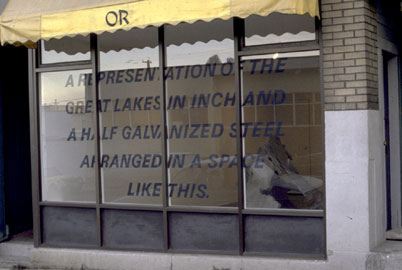As the literal title suggests, this work is a reflection on the problems of representation and the schematic repositioning of objects separated from their actual originals. In this case, the North American Great Lakes constitute the impulse for a progressive re-picturing of the lakes up to their final embodiment in a material as distant from la source as their reconfigured image. (more)
The procedure for the development of the piece began with two observations: the first was witnessing, in the early 70's, a pantographic cutter at work in a steel factory. This machine uses a guided light beam to follow an engineer's drafted line drawn on paper, while simultaneously directing oxy/acetylene torches to cut the pattern out of steel plate. The second instigation was the memory of a childhood book, Paddle to the Sea by Holling C. Holling, written in 1941, about a model canoe that makes an eventful voyage from the headwaters of the Great Lakes in Lake Nipegon out to the Atlantic and beyond. Holling's illustrations included small sketches of the lakes as objects: Superior as a wolf's head, Michigan as a trapper with his pack, and so on. This convincing imaginative transformation had a great effect on how I subsequently saw the world; a body of water as an object became possible.
The production of hydrographic charts, formerly dependent on laborious manual surveys, now uses global-positioning-satellite-derived information and automatic digital plotters to produce contours of landforms and bodies of water. These graphic techniques constitute the first removes from the physical and specific watery aspects of the lakes themselves, and are already a massive reduction of the complexity of incident and particularity that the physical experience of the lakes provide.
Charts of the individual lakes were first photographed as slides, then projected onto tracing paper and their outlines re-contoured in consideration of the limits of the pantographic cutter, which is easily confused by detail. Each of these processes remove the representation further from its original source, and demonstrate the chart's inability to depict with any fidelity the lived experience of standing on that shore.
On a boat, learning to read a nautical chart involves looking out across a body of water at a three-dimensional complex of overlapping land masses, and then looking down at a two-dimensional plan view of the same place, and trying to reconcile the physical reality of one with the abstract schematic of the other, to determine where you are in a moving liquid on a pitching and yawing vessel: at best an approximate process. It is a complex act of dimensional imagining; but even this rough matrix can get you safely home.
For a century the economy of the Great Lakes depended on vast ore carriers feeding eastern steel mills. A Representation... acknowledges that moment, now fixed in history, when steel traffic was still vital to the lakes, when looking down on that frozen water from the air seemed like looking down at galvanized cut-outs of lakes set into a rumpled and unruly landscape.
The final configuration of the piece, as a one-ton stack of propped steel, makes one more reference: to a modernist tradition of abstract steel sculpture, from its early figurations through its increasingly nonrepresentational formalisms, to its conceptual factuality. The transformational potential of this ur-material of the industrializing world has carried with it an heroic allegiance to modernism's debt to engineered progress; a weakening of that paradigm, with its reduced capacity for convincing metaphor.
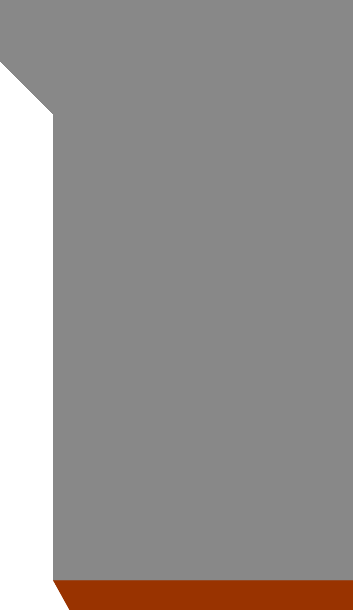
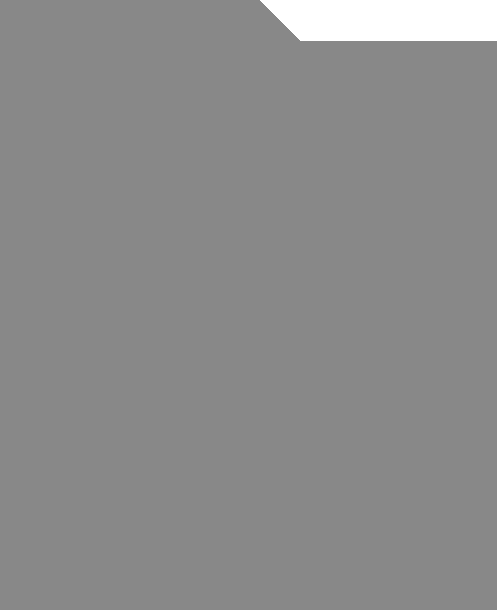

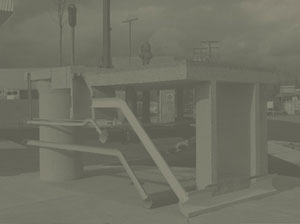
1981-2000
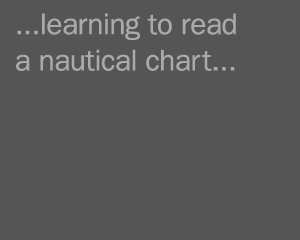
A REPRESENTATION OF THE GREAT LAKES IN INCH & A HALF GALVANIZED STEEL ARRANGED IN A SPACE LIKE THIS.
1984, galvanized steel, 4' X 12' X 6'
1984, galvanized steel, 4' X 12' X 6'
gregsnider.ca Copyright © 2007 - Greg Snider.
All Rights Reserved. contact: greg@gregsnider.ca
